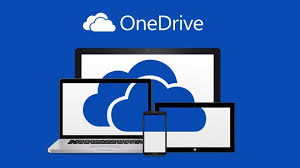
4 September 2024, 0 Comments
Microsoft OneDrive – A Modern Approach to Data Ownership and Security
In the digital age, businesses are increasingly reliant on efficient and secure methods of sharing information with their customers. Microsoft OneDrive offers a robust solution that not only ensures seamless sharing but also maintains data ownership and security.
Microsoft OneDrive is a cloud storage service that allows users to store files and access them from any device with an internet connection. It integrates seamlessly with Microsoft Office and other Microsoft 365 applications, making it an ideal tool for businesses. OneDrive offers various features for file sharing, collaboration, and data security, which are essential for maintaining control over your data.
The Advantages of Using OneDrive Over Email
While emailing data to customers has been a common practice, OneDrive offers several advantages that make it a superior option for sharing information:
Maintaining Data Ownership
When you share files via OneDrive, the data remains within your Microsoft 365 tenant. This means you retain full ownership and control over the data. In contrast, emailing files often involves sending copies of the data outside your organisation, which can lead to loss of control and potential security risks.
Enhanced Security
OneDrive provides advanced security features such as encryption, multi-factor authentication, and compliance with industry standards. You can also monitor access and activity on shared files, ensuring that your data is secure at all times.
Easier Collaboration
OneDrive enables real-time collaboration on documents, allowing you and your customers to work together more efficiently. Multiple users can simultaneously edit a document, and changes are automatically saved and synchronized.
Version Control
OneDrive maintains a version history of your files, allowing you to track changes and revert to previous versions if needed. This is particularly useful when collaborating on documents, as it ensures that you can always access the most up-to-date version.
Reduced Email Clutter
Sharing large files via email can quickly fill up your inbox and create confusion with multiple email threads. With OneDrive, you can share a single link to a file or folder, keeping your communication streamlined and organized.
Best Practices for Sharing Information with Customers
To make the most of OneDrive’s sharing capabilities, consider the following best practices:
1. Use Descriptive File Names
Ensure your file names are clear and descriptive so that your customers can easily identify the content. This will make it easier for them to find and access the information they need.
2. Set Appropriate Permissions
Carefully consider the level of access you grant to your customers. If they only need to view the files, set the permissions accordingly. If they need to collaborate, allow them to edit the documents.
3. Monitor Access and Activity
Regularly review the access and activity logs for your shared files. This will help you identify any unauthorized access and take appropriate action to protect your data.
4. Communicate Clearly
When sharing files via OneDrive, provide clear instructions to your customers on how to access and use the information. This will ensure a smooth and efficient experience for them.
Sharing Files and Folders on OneDrive
OneDrive makes it easy to share files and folders with your customers. Here’s how you can do it:
Select the File or Folder
Navigate to the file or folder you want to share in your OneDrive. Right-click on the item and select the “Share” option.
Set Permissions
OneDrive allows you to control the level of access you grant to your customers. You can choose to allow them to view or edit the files. Additionally, you can set an expiration date for the shared link and add a password for extra security.
Share the Link
After setting the permissions, you can generate a shareable link. You can copy this link and send it to your customers via email, messaging apps, or any other communication channel you prefer.
